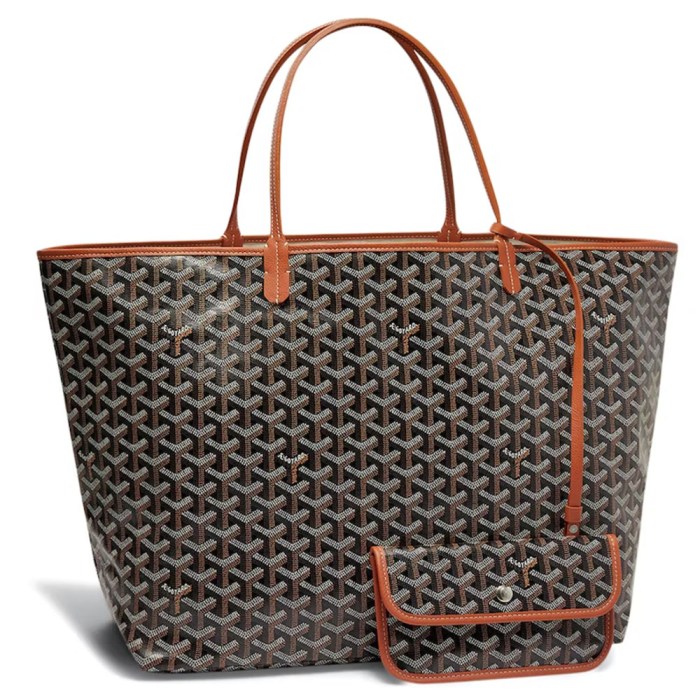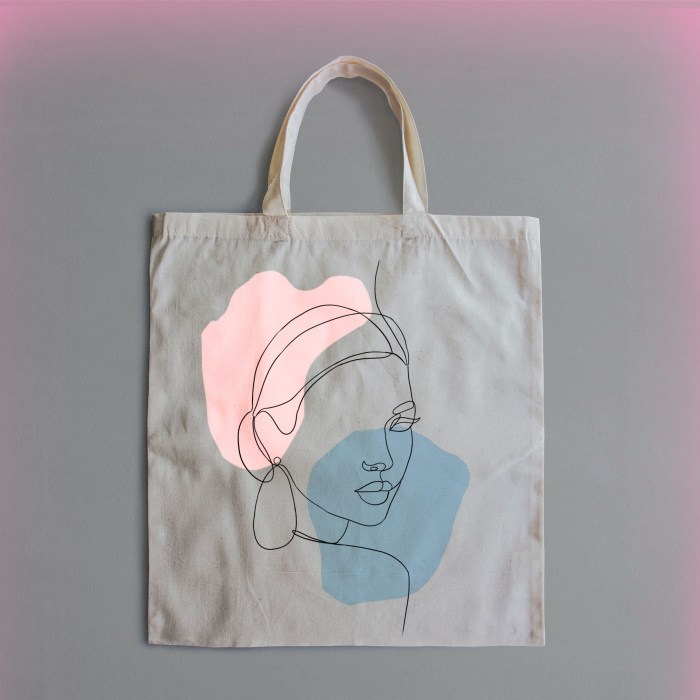Exploring Tote Bag Design: The Ultimate Guide
Tote bag design is a fascinating realm where functionality meets style, creating a versatile accessory that has become a staple in the fashion world. From the choice of materials to the intricate details, every element plays a crucial role in shaping the perfect tote bag.
Let's delve into the art and science of tote bag design to uncover the secrets behind this beloved accessory.
In the subsequent paragraphs, we will explore the key components, latest trends, customization options, and much more, providing a comprehensive overview of this ever-evolving field.
Overview of Tote Bag Design
Tote bags are versatile, large, and unfastened bags with parallel handles that emerge from the sides of its pouch. They are commonly used for carrying various items like groceries, books, or everyday essentials. Design plays a crucial role in creating a functional and stylish tote bag that meets the needs and preferences of different individuals.
Importance of Design in Tote Bags
Design is essential in tote bags as it determines the overall look, durability, and usability of the bag. A well-thought-out design can enhance the aesthetic appeal of the tote bag while ensuring it is practical for everyday use. Factors such as the choice of materials, size, and added features all contribute to the design of a tote bag.
- Materials: Tote bags can be made from a variety of materials such as canvas, leather, nylon, or recycled fabrics. The choice of material affects the durability, weight, and overall appearance of the bag.
- Size: Tote bags come in different sizes ranging from small to oversized. The size of the tote bag is crucial in determining its capacity and functionality for specific purposes.
- Target Audience: Designers consider the preferences and needs of the target audience when creating tote bags. For example, a tote bag designed for students may have compartments for laptops and books, while a tote bag for beach-goers may be water-resistant with a vibrant print.
Elements of Tote Bag Design
When it comes to designing a tote bag, several key elements contribute to creating a well-designed and functional product. These elements range from the style of handles and closure mechanisms to the use of color, patterns, and textures, all of which play a crucial role in the overall aesthetics and usability of the tote bag.
Handles
The handles of a tote bag are one of the most essential elements as they determine the comfort and ease of carrying the bag. Whether it's short straps for handheld use or longer shoulder straps for added convenience, the design of handles should be sturdy, comfortable, and complement the overall look of the bag.
Closure
The closure mechanism of a tote bag is another important element to consider. From magnetic snaps to zippers or buttons, the closure not only adds a touch of functionality but also enhances the security of the bag's contents. The choice of closure should align with the overall design aesthetic and user preferences.
Pockets
Pockets in a tote bag offer additional storage and organization options. Whether it's an interior zip pocket for valuables or external slip pockets for easy access to essentials like a phone or keys, the placement and design of pockets can greatly enhance the usability of the bag.
Color, Patterns, and Textures
Color, patterns, and textures are crucial design elements that can make a tote bag stand out. Bold colors or patterns can add a pop of personality, while textures like leather or canvas can lend a touch of sophistication. The interplay of these elements can create a visually appealing and unique tote bag design.
Ergonomics and Usability
Ergonomics and usability are paramount in tote bag design to ensure comfort and convenience for the user. Factors such as weight distribution, strap length, and interior organization contribute to the overall usability of the bag. A well-designed tote bag should not only look good but also be practical and comfortable to carry.
Trends in Tote Bag Design

When it comes to tote bag design, there are several trends that have gained popularity in recent years, reflecting changing consumer preferences and environmental concerns.
Eco-Friendly Materials
Eco-friendly materials have become a key trend in tote bag design, with more consumers opting for sustainable options. Tote bags made from materials such as organic cotton, recycled polyester, or even upcycled materials are gaining popularity due to their reduced environmental impact.
Minimalist Styles
Minimalist styles are another prevalent trend in tote bag design
Customizable Options
Customizable options have also become a popular trend, allowing consumers to personalize their tote bags with initials, patterns, or even photos. This trend caters to the desire for unique and personalized accessories.
Traditional vs. Modern Designs
Traditional tote bag designs often featured basic shapes and sturdy construction, primarily used for practical purposes. In contrast, modern designs experiment with unconventional shapes, innovative materials, and unique features to cater to diverse consumer preferences.
Cultural Influences and Sustainability
Cultural influences play a significant role in shaping tote bag design trends. Patterns, motifs, and colors inspired by different cultures can be seen in contemporary tote bag designs, adding a touch of uniqueness and diversity. Additionally, the growing emphasis on sustainability has led to the rise of eco-friendly practices and materials in tote bag design, reflecting a broader shift towards environmental consciousness.
Customization and Personalization

Customization and personalization play a crucial role in the tote bag design industry. By offering unique options for customers to personalize their tote bags, brands can create a more personalized shopping experience and build stronger relationships with their customers. Let's explore some examples of ways tote bags can be customized or personalized and discuss the importance of this customization in the design and manufacturing process.
Examples of Customization
There are several ways tote bags can be customized to meet the preferences of individual customers. Some common examples include:
- Monogramming: Adding initials or names to the tote bag to give it a personal touch.
- Custom Prints: Printing unique designs, patterns, or images on the tote bag to make it one-of-a-kind.
- Color Options: Allowing customers to choose from a variety of colors for the tote bag to suit their style.
- Size Variations: Offering different sizes of tote bags to accommodate different needs, such as a small tote for daily essentials or a larger tote for groceries.
Importance of Personalization
Providing personalized options in the design and manufacturing process is essential for brands to stand out in a competitive market. By allowing customers to customize their tote bags, brands can create a sense of ownership and uniqueness, leading to a more memorable shopping experience.
Personalization also helps build brand loyalty as customers feel a stronger connection to a product that reflects their individual style and preferences.
Impact on Consumer Preferences and Brand Loyalty
Customization has a significant impact on consumer preferences and brand loyalty. When customers can personalize their tote bags, they are more likely to feel emotionally attached to the product and the brand. This emotional connection can lead to repeat purchases, positive word-of-mouth recommendations, and ultimately, increased brand loyalty.
By offering personalized options, brands can differentiate themselves from competitors and create a loyal customer base that values unique and customized products.
Final Conclusion
As we conclude our journey through the world of tote bag design, it becomes evident that this seemingly simple accessory holds a myriad of possibilities. Whether you prefer a classic design or a contemporary twist, there is a tote bag out there for everyone.
Embrace the creativity, functionality, and style that define tote bag design, and make a fashion statement that is uniquely your own.
Questions Often Asked
How important is the choice of materials in tote bag design?
The choice of materials significantly impacts the durability, appearance, and overall quality of a tote bag. It can determine the bag's functionality, style, and longevity.
What role do color and patterns play in tote bag design?
Color and patterns can enhance the aesthetic appeal of a tote bag, making it more visually appealing and versatile. They can also reflect current trends and personal preferences.
Why is ergonomics crucial in tote bag design?
Ergonomics ensures that a tote bag is comfortable to carry, easy to use, and practical in daily life. It focuses on maximizing user convenience and minimizing strain on the body.




